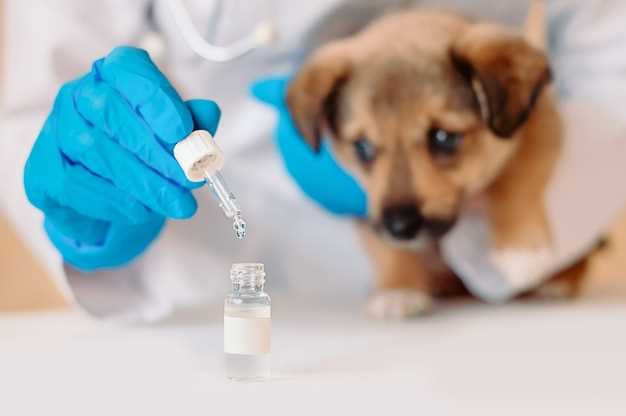
Is your furry friend suffering from anxiety or allergies?
Introducing Hydroxyzine 25 mg tablets, specially formulated for dogs.
Hydroxyzine is a safe and effective medication that can help relieve your dog’s symptoms, allowing them to live a happier and healthier life.
Whether your dog is experiencing itching, hives, or anxiety, Hydroxyzine can provide fast and long-lasting relief.
Don’t let your dog suffer in silence. Give them the relief they deserve with Hydroxyzine 25 mg tablets.
Consult your veterinarian to see if Hydroxyzine is the right choice for your dog.
Benefits
Hydroxyzine 25 mg for dogs offers several benefits that can greatly improve their overall well-being:
1. Relieves anxiety in dogs
Anxiety can have a significant impact on a dog’s behavior and quality of life. Hydroxyzine is a powerful antihistamine that can also act as an anxiolytic, helping to calm anxious dogs. It works by blocking certain chemicals in the brain that are associated with anxiety, allowing dogs to feel more relaxed and at ease.
2. Reduces itching and scratching
Hydroxyzine is commonly used to treat allergies in dogs, as it effectively reduces itching and scratching caused by various skin conditions. It acts as an antihistamine, preventing the release of histamine, which is responsible for the itching sensation. By reducing itching and scratching, dogs can experience relief from discomfort and have healthier skin.
Hydroxyzine 25 mg for dogs is a safe and effective medication that can provide significant benefits for dogs suffering from anxiety and itching. Before administering hydroxyzine to your dog, it is important to consult with a veterinarian to determine the appropriate dosage and to discuss any potential side effects.
Relieves anxiety in dogs
Hydroxyzine is a medication that can significantly relieve anxiety in dogs. Anxiety in dogs can manifest in various ways, such as excessive barking, destructive behavior, urinating in the house, or aggression. It can be caused by a variety of factors, including separation anxiety, noise phobias, or traumatic experiences.
Hydroxyzine works by inhibiting certain chemicals in the brain that contribute to anxiety. It helps to calm dogs down and reduce their anxious behavior.
Many dog owners have reported positive results when using hydroxyzine to relieve anxiety in their dogs. It can help reduce excessive barking, prevent destructive behavior, and promote a sense of calmness in dogs.
If your dog is suffering from anxiety, hydroxyzine may be a suitable solution. However, it is important to consult with a veterinarian to determine the appropriate dosage and duration of treatment for your dog.
Reduces itching and scratching
Hydroxyzine is a medication that can effectively reduce itching and scratching in dogs. It works by blocking the receptors in the body that cause itching and inflammation, providing relief for your furry friend.
If your dog is suffering from allergies, insect bites, or other skin irritations that lead to itching and scratching, Hydroxyzine can help alleviate these symptoms. It can also be used in cases of atopic dermatitis, a condition that causes chronic itching in dogs.
By reducing itching and scratching, Hydroxyzine can prevent further damage to your dog’s skin, such as sores and infections. It can also improve your dog’s quality of life by relieving the discomfort and irritation caused by itching.
Administering Hydroxyzine to your dog is easy and convenient. The medication can be given orally in the form of tablets, capsules, or liquid. Your veterinarian will provide you with specific instructions on how to properly dose and administer the medication to ensure your dog receives the correct dosage for their size and condition.
It is important to follow your veterinarian’s instructions and not adjust the dosage or frequency of administration without consulting them first. They will consider your dog’s weight, overall health, and other factors to determine the appropriate dose and duration of treatment.
Hydroxyzine can be a safe and effective solution for reducing itching and scratching in dogs. However, like any medication, it can have potential side effects. It is important to be aware of these side effects and monitor y
Administration
Hydroxyzine is typically administered orally to dogs. The dosage and frequency of administration may vary depending on the dog’s weight and individual needs. It is important to follow the instructions provided by your veterinarian.
Hydroxyzine tablets can be given with or without food. However, it is generally recommended to administer them with food to help prevent stomach upset. If your dog has difficulty swallowing tablets, the tablets can be crushed and mixed with a small amount of wet food or administered using a pill pocket or pill dispenser.
The dosage of Hydroxyzine for dogs usually ranges from 0.5 mg to 1 mg per pound of body weight, given every 6 to 8 hours. The exact dosage will be determined by your veterinarian based on your dog’s specific condition. It is important to strictly adhere to the prescribed dosage and schedule to ensure the effectiveness and safety of the medication.
It is always recommended to consult with your veterinarian before starting any new medication for your dog. Your veterinarian will be able to provide specific guidance on the administration of Hydroxyzine and may adjust the dosage based on your dog’s individual needs.
| Weight of Dog | Dosage | Frequency |
|---|---|---|
| 10-25 lbs | 10-25 mg | Every 6-8 hours |
| 26-50 lbs | 25-50 mg | Every 6-8 hours |
| 51-100 lbs | 50-100 mg | Every 6-8 hours |
| Above 100 lbs | 100 mg | Every 6-8 hours |
Dosage instructions for dogs
When administering Hydroxyzine to dogs, it is crucial to follow the correct dosage instructions in order to ensure the safety and effectiveness of the medication. The dosage may vary depending on the size and weight of the dog, as well as the severity of the condition being treated. It is always recommended to consult with a veterinarian for a proper dosage recommendation.
General guidelines

In general, the usual dosage of Hydroxyzine for dogs is 1 mg per pound of body weight. This dosage can be divided into two or three equal doses per day, depending on the veterinarian’s instructions. The medication may be given with or without food, depending on the dog’s preference.
Specific conditions
In certain cases, such as for the treatment of anxiety or itching, the veterinarian may adjust the dosage accordingly. For example, a higher dosage may be necessary for dogs experiencing severe anxiety or intense itching.
It is important to note that the dosage and duration of treatment should always be prescribed by a veterinarian, as they will determine the most appropriate course of action based on the dog’s specific needs and health condition.
It is crucial to follow the recommended dosage instructions and never exceed the prescribed amount, as overdosing can lead to adverse effects. If a dose is missed, it is advisable to administer it as soon as possible, unless it is close to the time for the next scheduled dose. In such cases, the missed dose should be skipped to avoid double dosing.
Always keep the medication out of reach of children and store it in a cool, dry place away from direct sunlight.
Possible Side Effects

While Hydroxyzine is generally safe for dogs when used as directed, there are potential side effects that pet owners should be aware of.
1. Drowsiness: Some dogs may experience drowsiness or sedation as a side effect of Hydroxyzine. This is more common in higher doses or when combined with other medications.
2. Dry Mouth: An anticholinergic effect of Hydroxyzine may cause dry mouth in dogs. This can lead to increased thirst and frequent water intake.
3. Urinary Retention: In rare cases, Hydroxyzine can cause urinary retention in dogs. This means that the dog may have difficulty urinating or have a decreased urine output.
4. Gastrointestinal Upset: Some dogs may experience gastrointestinal upset such as nausea, vomiting, or diarrhea as a side effect of Hydroxyzine.
5. Allergic Reactions: While rare, some dogs may have an allergic reaction to Hydroxyzine. Signs of an allergic reaction may include swelling, itching, difficulty breathing, or rash. If any of these signs occur, immediate veterinary attention is necessary.
If any side effects are observed or if the dog’s condition worsens while taking Hydroxyzine, it is important to contact a veterinarian for further guidance.
Potential side effects of Hydroxyzine in dogs
While Hydroxyzine can provide relief from anxiety and itching in dogs, it is important to be aware of potential side effects that may occur. Although these side effects are uncommon, they should be carefully monitored if your dog is taking Hydroxyzine.
1. Drowsiness: One of the most common side effects of Hydroxyzine in dogs is drowsiness. Your dog may appear lethargic or have a decreased level of alertness. This effect is usually temporary and tends to subside as your dog adjusts to the medication.
2. Dry mouth: Hydroxyzine may cause your dog to develop a dry mouth. This can make them excessively thirsty and may result in increased water consumption. If you notice a significant increase in thirst, consult your veterinarian.
3. Urinary retention: In some cases, Hydroxyzine may affect your dog’s ability to urinate normally. Your dog may have difficulty starting or fully emptying their bladder. If you notice any changes in your dog’s urinary habits, such as straining or discomfort, contact your veterinarian.
4. Gastrointestinal upset: Hydroxyzine can potentially cause gastrointestinal upset in dogs. This may include symptoms such as nausea, vomiting, or diarrhea. If your dog experiences any of these symptoms, it is important to consult your veterinarian for further guidance.
5. Allergic reactions: Although rare, dogs can have allergic reactions to Hydroxyzine. If your dog experiences symptoms such as difficulty breathing, swelling, or hives, seek immediate veterinary attention.
Note: This list is not exhaustive. There may be other side effects that are not mentioned here. It is important to closely monitor your dog while they are taking Hydroxyzine and consult your veterinarian if you have any concerns.
Availability
Hydroxyzine 25 mg for dogs is available in most veterinary clinics and pharmacies. You can also purchase it online from reputable pet medication websites. It is important to ensure that you are buying from a trusted source to guarantee the quality and safety of the product.
Before purchasing Hydroxyzine for your dog, it is recommended to consult with your veterinarian to determine the appropriate dosage and to ensure that it is the right medication for your dog’s specific needs. They will be able to provide you with the necessary prescription, if required, and guide you on how to properly administer the medication to your dog.
When purchasing online, make sure to read reviews and check for any certifications or accreditations that demonstrate the website’s reliability. It is also important to check the expiration date and packaging of the product upon delivery to ensure that it has been properly stored and handled.
By ensuring that you are purchasing Hydroxyzine from a reputable source, you can have peace of mind knowing that you are providing your dog with a safe and effective medication for their anxiety and itching needs.
